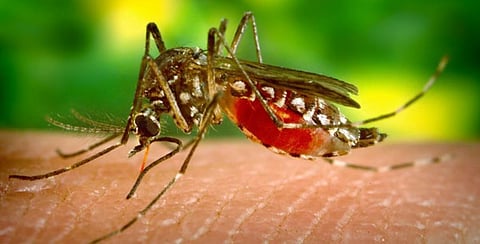
- Home
- Live Blog
- Breaking News
- Top Headlines
- Cities
- NE News
- Sentinel Media
- Sports
- Education
- Jobs

New York: Researchers have developed a tool that attracts and captures female mosquitoes looking for a site to lay eggs, which in the future may help curb the chikungunya virus.
The study shows that Autocidal Gravid Ovitrap (AGP trap) successfully protected people from getting infected with the chikungunya virus in Puerto Rico.
“AGO traps are a novel chemical-free, effective approach to control Aedes aegypti (Yellow fever mosquito) populations and provide protection from infection with the pathogens that these mosquitoes transmit,” said researchers from the US Centers for Disease Control and Prevention (CDC).
“Further evaluations should determine if AGO traps are sustainable and effective in large scale community trials,” they said.
The lack of effective tools to control Aedes aegypti mosquito populations has resulted in the continued expansion of the dengue virus, zika virus and chikungunya virus.
For the study, the researchers randomly selected 290 households in Puerto Rican communities that had AGO trap interventions and 349 households in communities without AGO traps. From intervention communities, 175 household members were analyzed and 152 from non-intervention communities.
Blood samples were collected from each participant to detect Chikungunya virus infection and surveys recorded demographic information as well as data on mosquito repellent and bed net use and frequency of mosquito bites.
A total of 114 participants (34.9 percent) were seropositive for the chikungunya virus. Among people who spent most of their daytime hours inside the community they lived in, 10.3 percent were seropositive for chikungunya virus in communities with AGO traps whereas 48.7 percent were positive for chikungunya virus in communities without traps. (IANS)